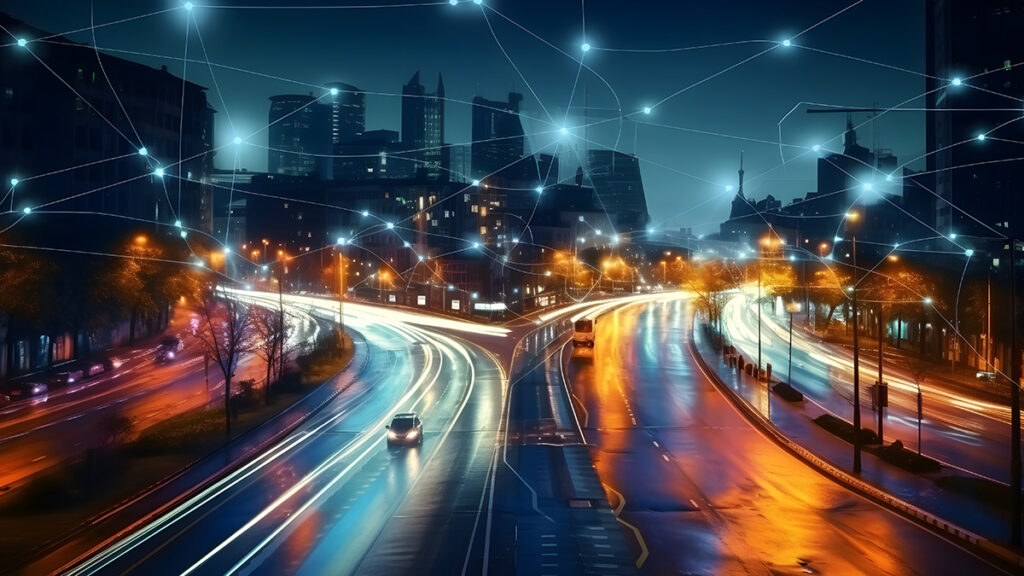IoT and Cloud computing technology have become staples in smart city transportation infrastructure. What makes them better than the standard systems?
Cloud computing and the IoT transforming transportation
IoT devices are becoming increasingly popular choices for digital transformations. While roughly 37 million of them existed in UK smart cities in 2023, experts believe there will be 88.66 million by 2028, meaning they’ll more than double in half a decade.
As time passes, more smart city transportation infrastructure relies on connected devices. Since they can monitor their IoT assets’ locations in real time with built-in Cloud-based geolocation technology, tracking hundreds of buses, trains, trams and coaches is relatively simple.
Sensors embedded in hundreds of traffic lights, bridges, GPS devices, highway cameras and vehicles constantly collect data. Locally processing all of that information would be next to impossible, but that’s where Cloud computing comes in.
Cloud computing enables IoT devices to process and store information on remote Cloud servers instead of locally. Analytics or machine learning algorithms can rapidly analyse all incoming data, uncovering hidden trends and providing insights about transportation demand, traffic flow, and potential delays.
Cloud-based fleet management makes up a significant chunk of Cloud computing and IoT applications in transportation. Since fleet information is stored in a central system, smart cities can remotely monitor vehicle maintenance, fuel efficiency and driver behaviour.
The benefits of leveraging Cloud computing and IoT
There are numerous advantages to leveraging Cloud computing for smart city IoT devices. For one, storing and processing data in a central system is far more secure. City officials can prioritise securing the Cloud against data breaches instead of focusing on every single endpoint.
Another substantial benefit is its affordability. According to one study, 63% of organisations that migrate to the Cloud have lower operational costs. Any money smart cities save can be reinvested into improving transportation systems and infrastructure.
Accessibility is one of the more significant benefits of leveraging Cloud computing for smart city IoT devices. When city officials store all transportation data in a central storage system, they eliminate data silos, meaning collaboration between local government agencies simplifies.
How Cloud computing and IoT improve transportation
One of the most noticeable ways Cloud computing and IoT improve transportation is through real-time insights. As a result, city officials and public transportation professionals can make data-driven decisions as soon as any delay, car accident, or traffic jam happens. On the end user side, a Cloud system collecting IoT data can provide bus schedule updates, vehicle accident reports, and delay notices regardless of the time of day or their location.
Considering UK trains arrived late 20.7% of the time in 2023, change is necessary. Fortunately, sensors can collect data on traffic congestion, weather conditions and roadway collisions to provide real-time alternate routes.
Some public transportation improvements revolve around infrastructure rather than bus schedules and train arrival times. Embedded sensors in bridges and roadways can collect wear-and-tear data so city officials and engineers know exactly when maintenance is due.
Those same embedded sensors can gather usage information, tracking how many vehicles use specific roads and bridges. This way, city officials know precisely where to direct transportation funds to ensure they make the most significant impact.
The future of public transportation in smart cities
Cloud computing and IoT technology go hand in hand. In all likelihood, there won’t be a future where UK smart cities use one without the other. They help make passengers’ lives easier, roads safer and traffic less congested, so they’ll probably remain staples.
Zac Amos is the Features Editor at ReHack. With over 4 years of writing in the technology industry, his expertise includes cybersecurity, automation, and connected devices. For more of his work, follow him on LinkedIn.
